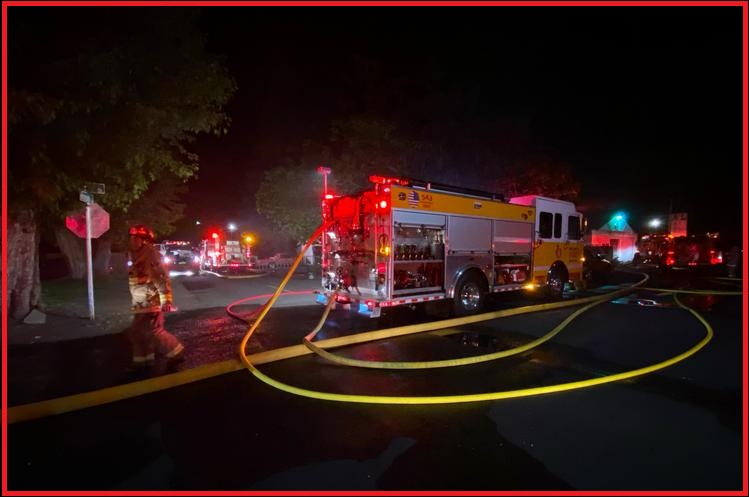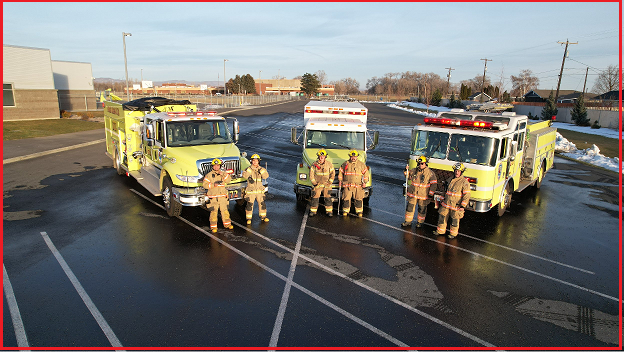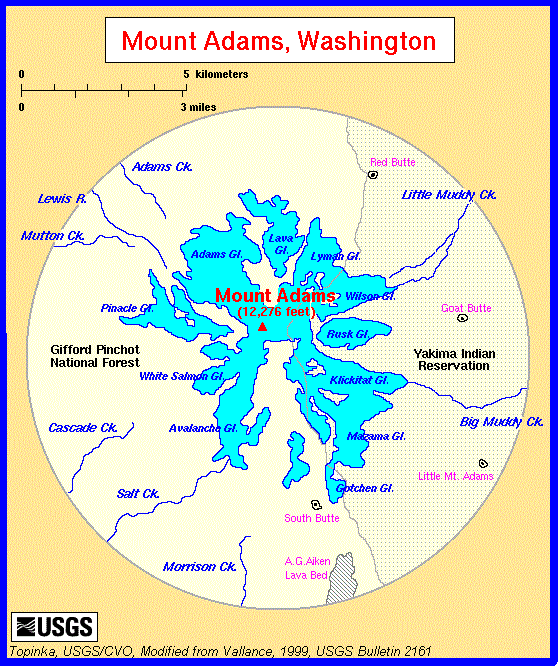|
|
|
Mount Adams Active Volcano
Mount Adams, one of the largest
volcanoes in the Cascade Range (3,742 meters - 12,276 feet), dominates the Mount
Adams volcanic field in Skamania, Yakima, Klickitat, and Lewis counties and the Yakima Indian Reservation of
south-central Washington. The nearby Indian Heaven and Simcoe Mountains volcanic fields lie west and southeast,
respectively, of the 1250 square kilometers (500 square miles) Adams field. Even though Mount Adams has been less
active during the past few thousand years than neighboring Mounts St. Helens, Rainier, and Hood, it assuredly will
erupt again. Future eruptions will probably occur more frequently from vents on the summit and upper flanks of Mount
Adams than from vents scattered in the volcanic fields beyond. Large landslides and lahars that need not be related
to eruptions probably pose the most destructive, far-reaching hazard of Mount Adams. -- Scott, et.al., 1995
Eruptive History: Mount Adams stands astride the Cascade Crest some 50 kilometers due east of Mount St. Helens.
The towering stratovolcano is marked by a dozen glaciers, most of which are fed radially from its summit icecap.
In the High Cascades, Mount Adams is second in eruptive volume only to Mount Shasta, and it far surpasses its
loftier neighbor Mount Rainier (which is perched on a pedestal of Miocene granodiorite). Adams's main cone exceeds
200 cubic kilometers, and at least half as much more was eroded during late Pleistocene time form earlier high-standing
components of the compound edifice: peripheral basalt adds another 70 cubic kilometers or so. Nearly all the high cone
above 2,300 meters in elevation was constructed during latest Pleistocene time, probably between 20 and 10 thousand
years ago, explaining the abundance of late-glacial till and the scarcity of older till. -- Hildreth, 1990, IN: Wood
and Kienle
|
|






































